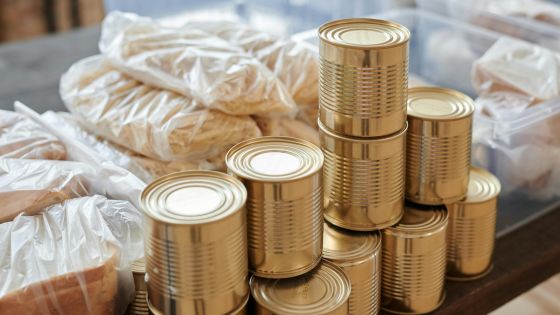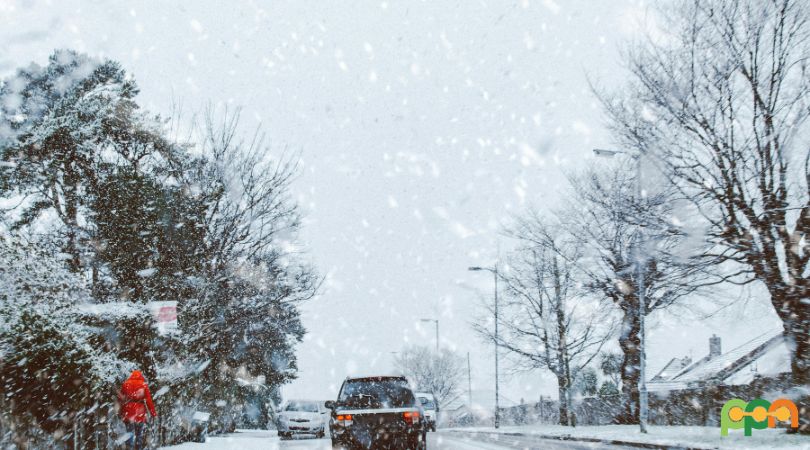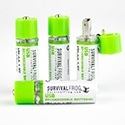A blizzard is not just a heavy snowstorm. According to the National Weather Service, a storm is classified as a blizzard when it meets specific criteria:
- Sustained winds or frequent gusts of at least 35 mph (56 km/h)
- Reduced visibility to a quarter mile or less due to blowing snow
- Duration of at least three hours
This means you can have a blizzard without significant new snowfall, if strong winds and blowing snow drastically reduce visibility. These severe winter weather events often bring freezing temperatures, whiteout conditions, and wind chills that can pose life-threatening risks.
The Science Behind Blizzards: How They Form and Develop
Blizzards form when several meteorological elements align:
Cold Air Mass: A necessary ingredient, typically originating from the Arctic or other polar regions.
Moisture in the Atmosphere: This comes from nearby lakes, oceans, or areas of low pressure, fueling precipitation.
Lifting Mechanism: Often a front or low-pressure system that forces the moist air to rise and cool, leading to snow formation.
Once snow begins to fall, strong winds — often associated with the low-pressure systems — blow the snow into the air, creating blinding whiteout conditions. The combination of these factors is what transforms a typical snowstorm into a blizzard.
The Effects of Blizzards on Communities and Infrastructure
Blizzards can have wide-reaching consequences:
- Transportation Disruptions: Roads become impassable, flights are grounded, and public transit shuts down, stranding thousands.
- Emergency Services Delays: Ambulances, fire trucks, and police vehicles may struggle to navigate snow-clogged roads.
- Power Outages: Heavy, wet snow and high winds can bring down power lines and damage utility infrastructure.
- Supply Chain Interruptions: Deliveries of essential goods — like food and medicine — may be delayed due to dangerous travel conditions.
Beyond the physical impact, blizzards can take a mental toll, especially for vulnerable populations like the elderly, children, and those with health conditions.
Preparing for a Blizzard: Tips for Safety and Survival
The best defense against a blizzard is preparation. Here are some practical tips:
- Build an Emergency Kit: Include flashlights, batteries, non-perishable food, water, blankets, a first aid kit, and necessary medications.

- Stay Informed: Monitor weather alerts from trusted sources, such as local meteorological agencies or NOAA.
- Winterize Your Home: Insulate pipes, seal windows, and ensure you have alternative heat sources in case of power loss.
- Avoid Travel: Stay indoors during the storm unless necessary. If you must travel, keep a winter emergency kit in your car.
- Check on Neighbors: Particularly the elderly or those living alone, to make sure they’re safe and have what they need.
The Role of Technology in Forecasting Blizzards: Advances in Meteorology
Thanks to advances in weather forecasting technology, we are better equipped than ever to anticipate and respond to blizzards:
- Radar Systems: These provide real-time data on precipitation intensity and movement.
- Satellite Imagery: Offers a wide view of storm systems and cloud formations over large areas.
- Computer Models: Predict how weather systems will behave based on current atmospheric data.
- Mobile Alerts and Apps: Deliver up-to-the-minute forecasts and warnings to individuals directly.
These innovations allow meteorologists to issue timely warnings, giving communities valuable hours or even days to prepare.
Embracing the Challenges of Blizzards While Staying Safe and Informed
Blizzards, while formidable, are not unpredictable. With a solid understanding of how they form, what dangers they pose, and how to prepare, we can reduce their impact on our lives. Embracing technology, promoting community preparedness, and staying informed are key to weathering even the fiercest winter storms. The goal is not just survival — but resilience.










